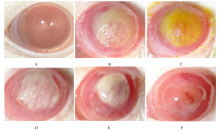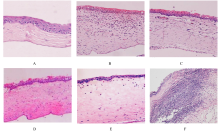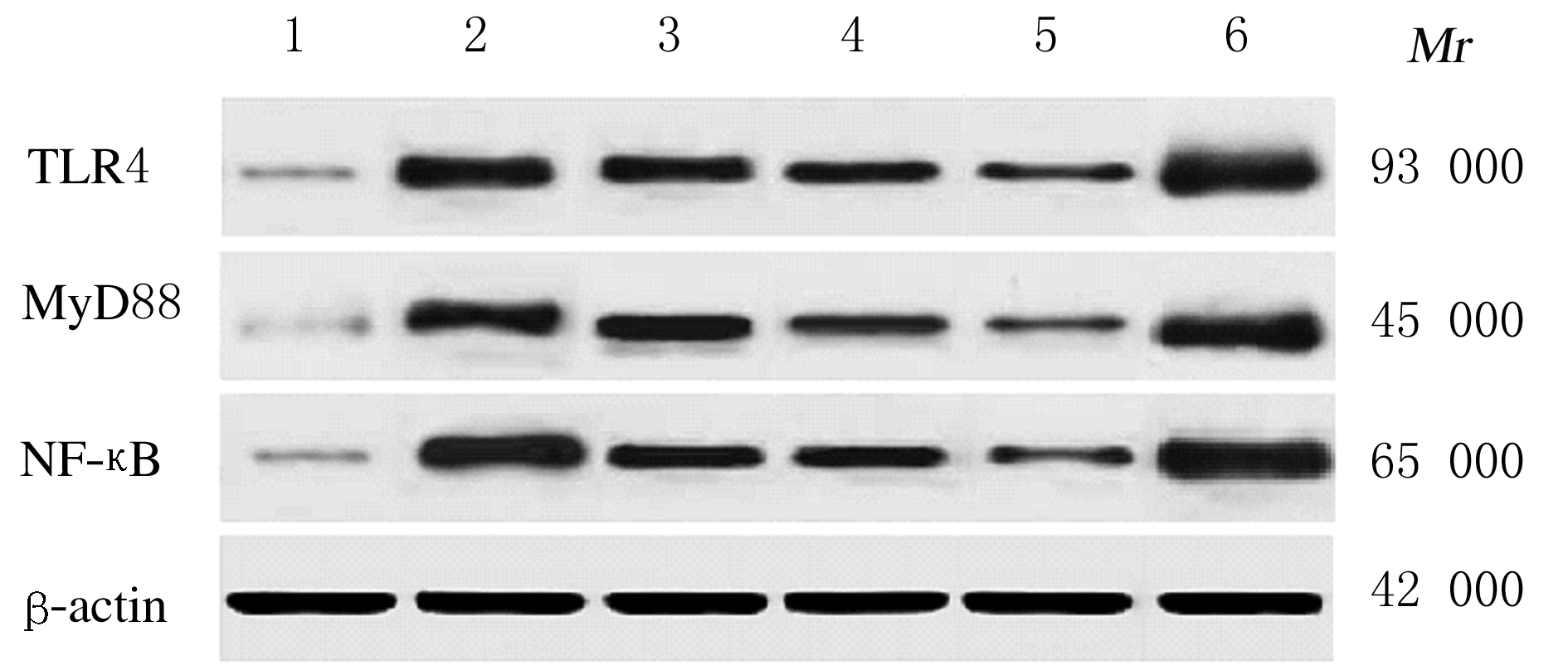吉林大学学报(医学版) ›› 2021, Vol. 47 ›› Issue (2): 315-322.doi: 10.13481/j.1671-587X.20210209
木犀草素通过TLR4/MyD88信号通路对大鼠烟曲霉菌性角膜炎的调控作用
- 齐齐哈尔医学院附属第三医院眼科,黑龙江 齐齐哈尔 161000
Regulatory effect of luteolin on Aspergillus fumigatus keratitis through TLR4/MyD88 signaling pathway in rats
- Department of Ophthalmology,Affiliated Third Hospital,Qiqihar Medical College,Qiqihar 161000,China
摘要: 探讨木犀草素通过Toll样受体4(TLR4)/髓样分化因子88(MyD88)信号通路对大鼠烟曲霉菌性角膜炎(AFK)的调控作用,阐明其抑制AFK炎症反应的机制。 100只SD大鼠随机选取15只作为假手术组[未注入烟曲霉菌(AF)孢子混悬液],其余85只大鼠采用AF孢子混悬液注入法建立AFK模型。建模成功的72只大鼠随机分为模型组14只、低剂量木犀草素组14只、中剂量木犀草素组14只、高剂量木犀草素组15只和脂多糖(LPS)+木犀草素组15只。低、中和高剂量木犀草素组大鼠给予浓度为5、10和20 g·L-1木犀草素溶液局部滴眼50 μL,假手术组和模型组大鼠给予等量1% DMSO溶液局部滴眼,LPS+木犀草素组大鼠给予20 g·L-1木犀草素溶液50 μL和LPS溶液1.0 μg局部滴眼,连续7 d。观察各组大鼠角膜大体变化并评估各组大鼠角膜炎症指数;制备各组大鼠角膜组织标本,采用HE染色法观察角膜组织病理形态表现;采用酶联免疫吸附试验(ELISA)检测各组大鼠角膜组织中白细胞介素1β(IL-1β)、肿瘤坏死因子α(TNF-α)和白细胞介素12(IL-12)水平,采用Western blotting法检测各组大鼠角膜组织中 TLR4、MyD88和核转录因子-κB(NF-κB)蛋白表达水平。 假手术组大鼠角膜组织上皮完整,无炎性细胞浸润;模型组和LPS+木犀草素组大鼠角膜呈现白色致密溃疡灶,水肿且表面无光泽,虹膜不可见,LPS+木犀草素组溃疡灶面积更大;低、中和高剂量木犀草素组大鼠角膜溃疡灶面积逐渐变小,病变减轻。HE染色,模型组和LPS+木犀草素组大鼠角膜均可见胶原纤维肿胀、排列紊乱,大量炎性细胞浸润;低、中和高剂量木犀草素组上述变化均减轻,其中高剂量木犀草素组减轻最为明显。与模型组比较,低、中和高剂量木犀草素组大鼠角膜炎症指数和角膜组织中IL-1β、TNF-α、IL-12水平及TLR4、MyD88和NF-κB蛋白表达水平明显降低(P<0.05);LPS+木犀草素组上述指标均高于模型组和低、中及高剂量木犀草素组(P<0.05)。 木犀草素对AFK大鼠具有治疗作用,可有效抑制角膜炎症反应,其作用机制可能与抑制TLR4/MyD88信号通路相关蛋白表达及其下游炎症因子有关。
中图分类号:
- R772.21









